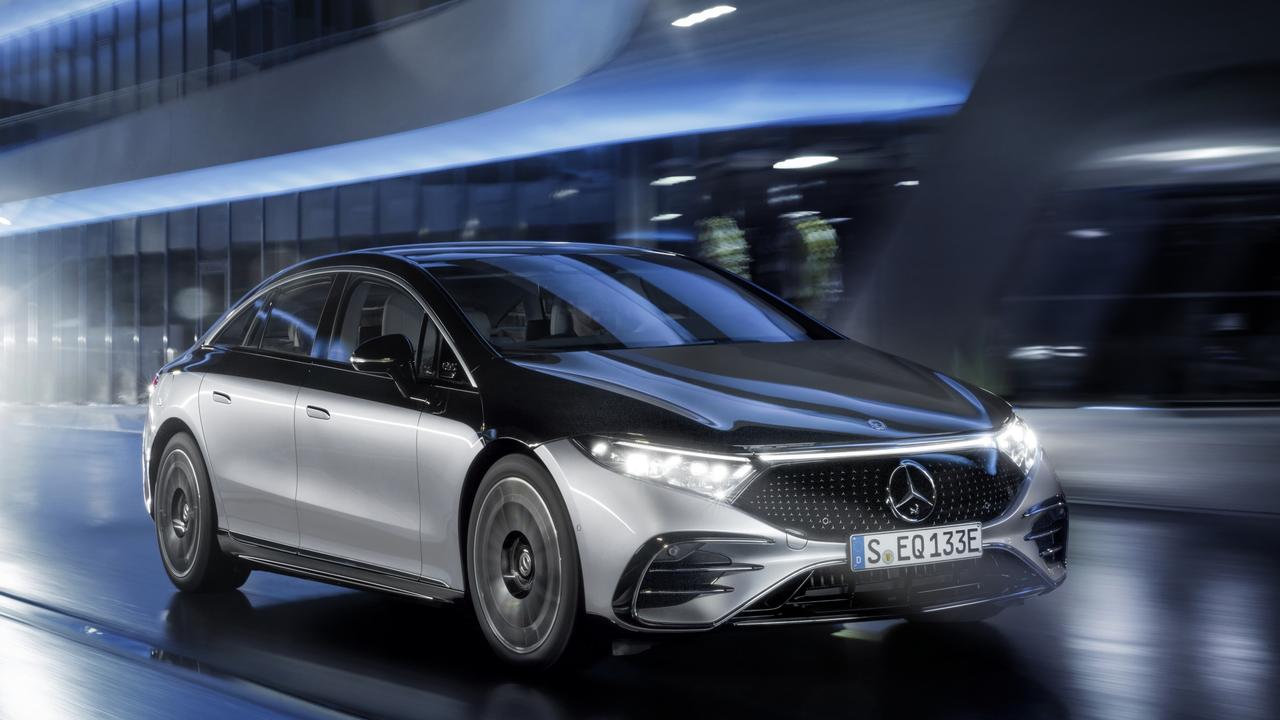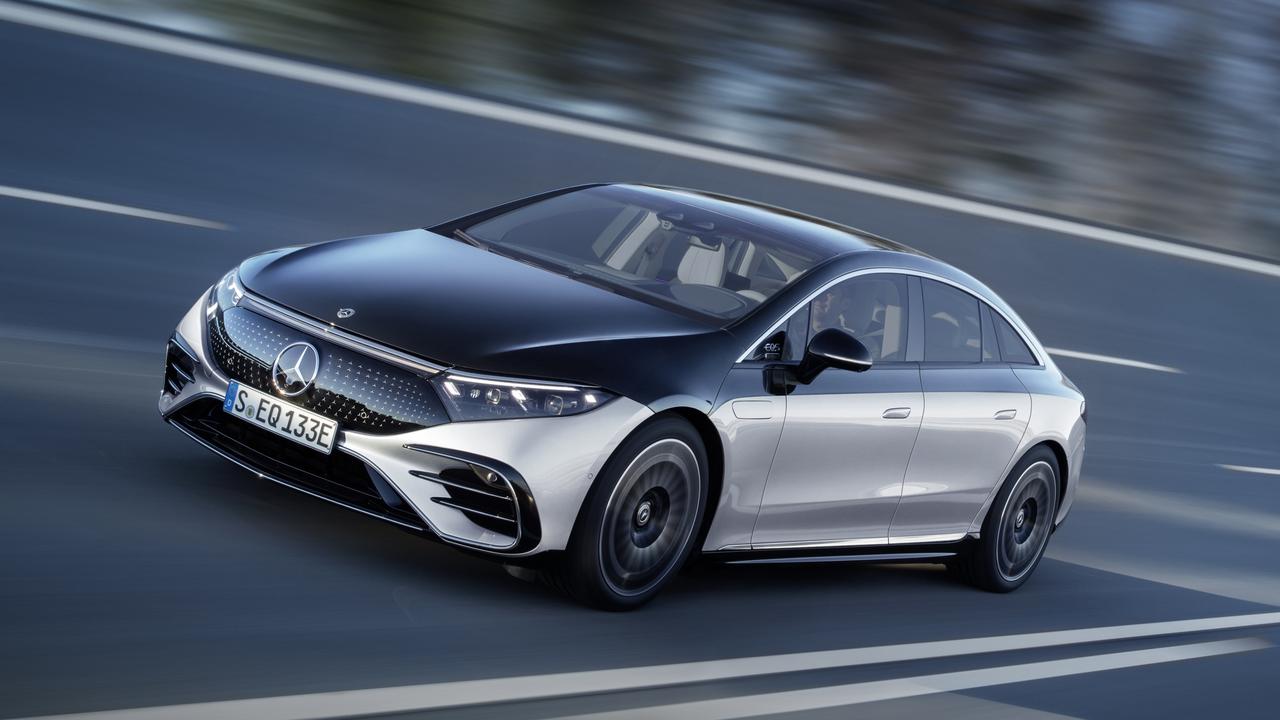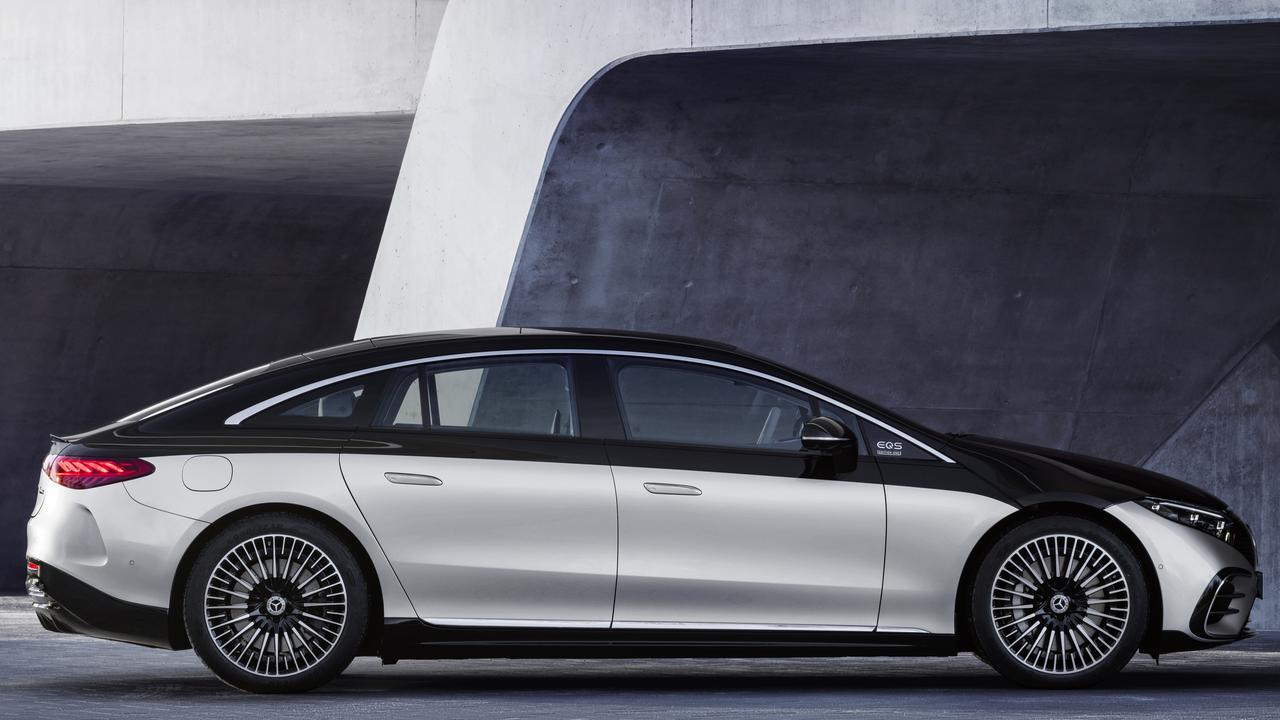Mercedes-Benz EQS revealed: Electric sedan has Tesla beating range
Benz has pushed the throttle to the floor as it looks to expand its new range of cars, and its latest machine has set a new benchmark.

Call the EQS a drag queen, if you want. This luxurious EV from Mercedes now wears the crown reserved for the world’s most aerodynamic production car.
Its distinctive liftback shape, finally revealed online overnight, sets a new record low for air resistance. It’s coefficient of drag, or Cd number, is just 0.20.
This is well below the previous best of 0.22, jointly held by two other Mercedes models, the latest S-Class limo and the small A-Class sedan.

The new EV doesn’t resemble anything Mercedes has ever produced before, and this is no accident. “With the EQS, we’ve designed a new shape for Mercedes to define an entire new generation of luxury cars,” explains design chief Gorden Wagener. The look is also intended to subtly suggest the car doesn’t have an ICE under its bonnet.

While the EQS is the first car to use Mercedes’ new purpose-designed kit of scalable EV components, it won’t be the last. Three more are confirmed for production and there are sure to be more.
The profile of the EQS is inspired by the curve of an archer’s bow. Mercedes calls it “one-bow” design, and the look will be a feature of other EQ models to come.

Though it doesn’t hit the beauty bullseye, the shape is very aerodynamic. And low air resistance is one of the reasons one version of the EQS – the 450+ – has a Tesla-beating 770km driving range. According to the WLTP test cycle, at least.
There are other benefits, too. Mercedes claims the lavish five-seat interior of the EQS is larger than any other luxury EV. The cab-forward proportions make the bonnet shorter and the interior longer. Because electric motors are very compact, the front overhang can be shorter and the wheelbase longer. This also makes for a roomy cabin.

Most of the space below the passenger compartment is taken up by a big 108kWh battery pack. A more compact 90kWh pack will be offered in the near future. Mercedes is confident the battery packs will be durable and long-lived; they come with a 10-year/250,000km guarantee to not lose more than 30 per cent of their storage capacity.

Besides having a charging port instead of a fuel filler, there are other obvious clues that the EQS is an EV. Its grille is a solid panel, for example. This reduces drag compared to an ICE-powered car, gives the Mercedes an identifiable face, and is a handy shield for some of the EQS’s forward-facing sensors.
The EQS goes on sale in Europe from June, beginning with the single-motor 450+ and dual motor 580 models. Mercedes used the EQS online premiere to announce there’s also a high-performance model in the development pipeline.
This will have “up to 560kW”. That power output, a massive increase over the 580, is a strong hint it’s going to wear the AMG badge of Mercedes-Benz’s famed fast-car division.
It’s probable yet more variants will go into production in the months before the EQS arrives in Australia around December. Mercedes-Benz Australia isn’t saying which versions will be imported, or talking about how much they will cost.



